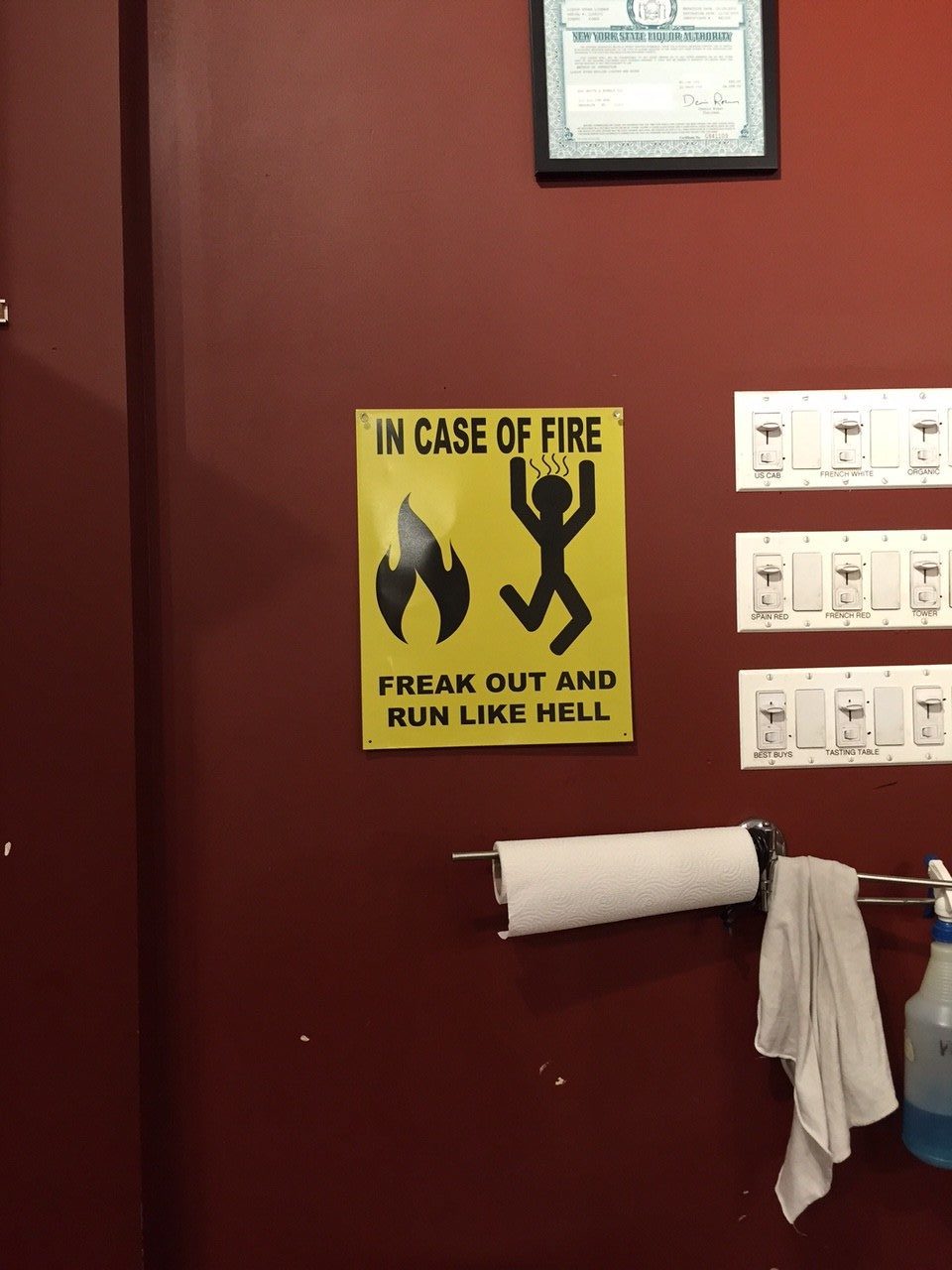
In a fire or other emergency, is this sign’s advice really what you want workers to do’

Under the OHS laws, employers must plan for various workplace emergencies, including fires, explosions, serious safety incidents and extreme weather conditions, such as tornadoes and floods. The idea is that adequate emergency preparedness will ensure that workers know how to respond in an emergency and thus won’t panic.
In that context, this sign’while amusing’isn’t very useful. In fact, the last thing you want workers to do is ‘freak out and run like hell!’
Granted, this sign was posted in a liquor store, not exactly a safety sensitive environment. And the workers at the store acknowledged that the sign was intended to be humorous and didn’t actually represent their emergency procedures.
Although humor can be an effective tool in some cases, such as in safety training sessions, be careful that your use of comedy doesn’t dilute the seriousness of workplace safety procedures.
6 STEPS TO EMERGENCY PREPAREDNESS
To ensure that your workplace and staff are adequately prepared for a variety of emergencies, take these six steps:
Step #1: Conduct a risk assessment to identify the kinds of emergencies your workplace is likely to face.
Step #2: Develop appropriate safety practices and procedures to respond to the identified emergencies (here’s a model emergency response plan you can adapt).
Step #3: If you have disabled workers, make sure your emergency procedures take their needs and limitations into account.
Step #4: Train workers on your emergency preparedness procedures.
Step #5: Ensure that emergency exits aren’t blocked or locked.
Step #6: Have a sufficient number of fire extinguishers available and make sure that they’re accessible to workers and functioning properly.
